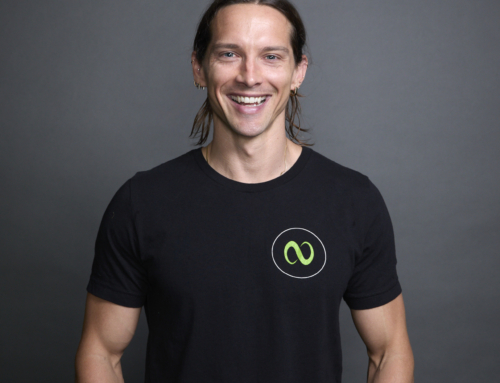by Keith Paine & Daniel Lucas.
Watch the video to see the difference in running techniques.
A new generation of “barefoot” runners has hit the streets, turning traditional thinking about running shoes upside down. Instead of cushioned sneakers, these runners wear shoes that look like gloves for the feet, with no cushioning at all. Instead of insoles, heel supports and treads, barefoot runners let the natural musculature of their feet do the cushioning. Barefoot running is a ripple that’s turned into a wave, with major athletic shoe brands scrambling to offer consumers shoes that have little or no support–the exact opposite of what they’ve been selling for years. If this phenomenon is new to you, look up Christopher McDougal’s best selling book Born to Run, which spins a tale of a Mexican badlands tribe that runs 50 miles a day in sandals with ease. It’s a great story that sparked a tremendous amount of interest in barefoot running—but are the book’s claims about barefoot running true? Are we all actually designed to run without cushioned shoes? Do we run better and more efficiently without any shoes at all?
It turns out that there’s a lot of support for barefoot running technique—and not just from a small group of radical runners. There’s evidence to suggest that, as runners, we’ve actually gotten worse with more cushioned shoes. “Humans have run for millions of years,” says Daniel Lieberman, a professor at Harvard University, “but the running shoe was only invented in the early 1970s.” And for most of our history, we ran barefoot or in sandals, not in hi-tech cushioned sneakers. Running shoes have changed the way we run, and perhaps not for the better. Most people who run with shoes, says Prof. Leiberman, strike the ground heel first. They have a very different heel strike than barefoot runners, who strike the ground with the middle or front of the foot, thereby drastically reducing their impact with the ground. David Willey, Editor-in-Chief of Runner’s World, agrees: “Studies show heavy heel-strikers can’t efficiently absorb and dissipate the impact forces of running, which over time can take a toll on our muscles, tendons and joints.” Anyone who has ever jumped and landed on his or her heels knows that’s true—our feet are designed to absorb impact front to back, not heel to toe. [See video above for a demonstration of the difference between toe-strike and heel-strike running.]
We’ve run barefoot for most of human history, so it stands to reason that our feet have evolved to run most efficiently barefoot, not with cushioned-heel shoes that allow us to get away with a heel strike over and over. Shoes also change our kinesthetic ability to run. “When you run in socks, shoes, inserts, midsoles and outsoles, your body’s proprioceptive system loses a lot of input,” says Amby Burfoot in Runner’s World. Wearing shoes, your body “switches off” to a degree. It’s like putting a pair of mittens on your hands; your hands still function, but your ability to fine-tune a task is greatly reduced.

Here are some key tips from Daniel Lucas on getting ready to run:
*Transition time is an important factor. If you’ve been running your whole life in shoes, don’t jump into barefoot running. Give your body time to transition, so you can adapt gradually. This transition time will be different for every runner. If you have the tendency to over-pronate while running, or have significant mis-alignment issues, then running without shoe support may not be for you. Start slowly—practice on the treadmill so you can understand how your stride will change without shoes. Keep in mind that over-striding leads to heel striking, so without shoes, you’ll probably need to shorten your stride.
*Use Micro-Progressions. It’s a good idea to progress your distance and speed in a methodical way. Don’t just make the leap! You want to be aware of how your body is going to recover from the new barefoot running technique, especially your feet. As Daniel says: “The studies out there point towards barefoot running being very good for you, but at Nimble we always add new loads and stresses to our bodies progressively. I’m also guessing those studies didn’t include many runners with poor form or dysfunction in their feet.”
*Start with Barefoot Training. At Nimble, we’ve found that performing strength training and soft-impact exercises barefoot has a profound positive effect on overall function and balance. Even walking barefoot for longer periods can make a difference. Work barefoot training into your program before you start barefoot running.
*We never say never…but if you’re thinking about running barefoot on pavement, that should be the last stage of a well-planned program! We ask you to think of the benefit of running barefoot on pavement versus the cost of damage to your ankles and feet—you’re probably better off saving barefoot running for the treadmill or natural surfaces like grass.
*The Bottom Line? A seasoned runner with good technique can benefit greatly from both running and training barefoot—especially as part of an overall strength and conditioning program. Conversely, a casual runner who has never run without the support of running shoes will risk injury by jumping right into barefoot running. Progress slowly into barefoot running.
For more info about training for barefoot running, or if you’d like to schedule a training session at our Manhattan studio, please contact us at info@www.nimblefitness.com


